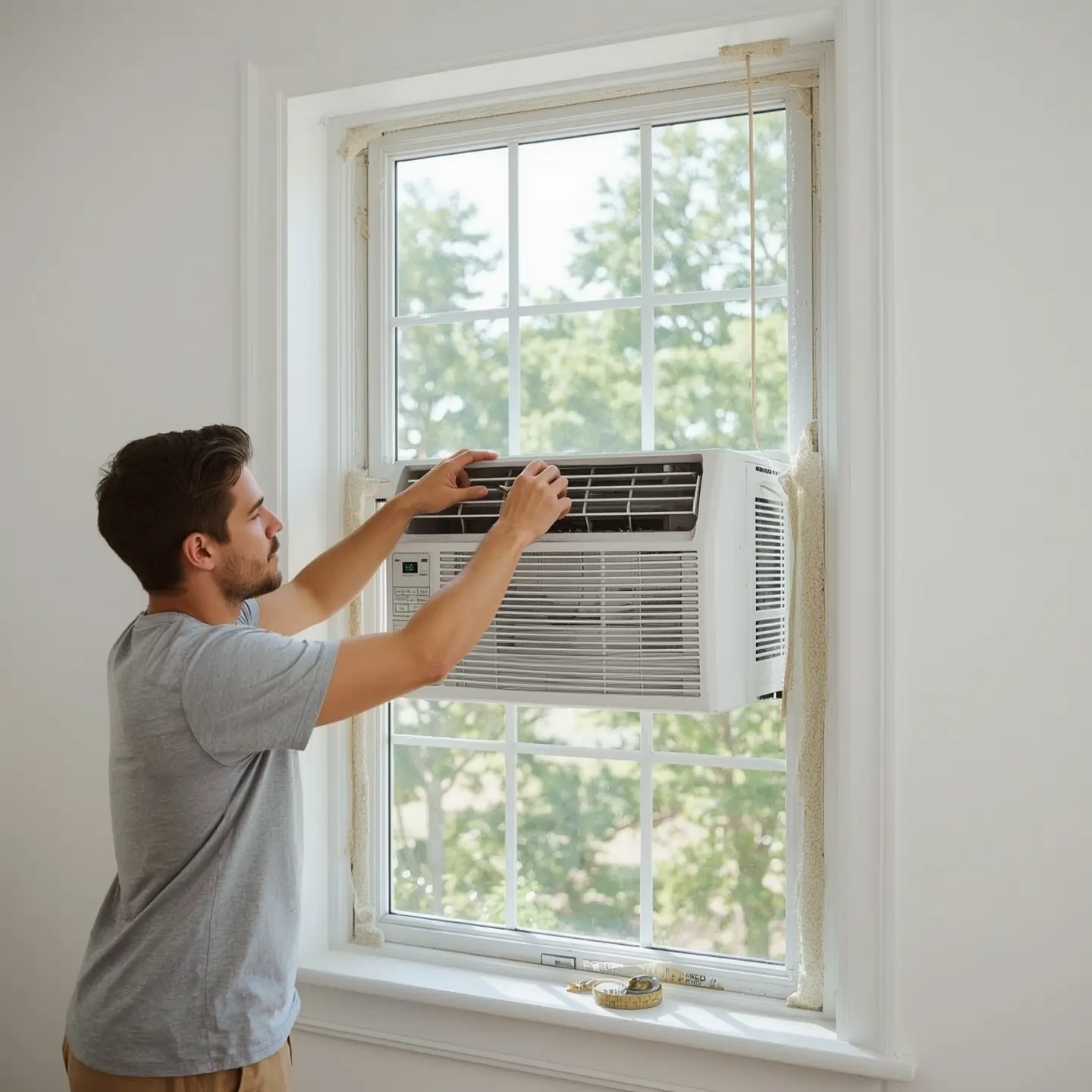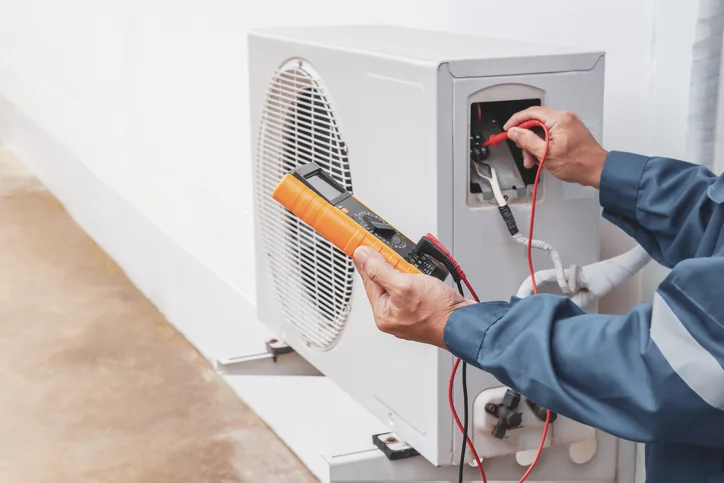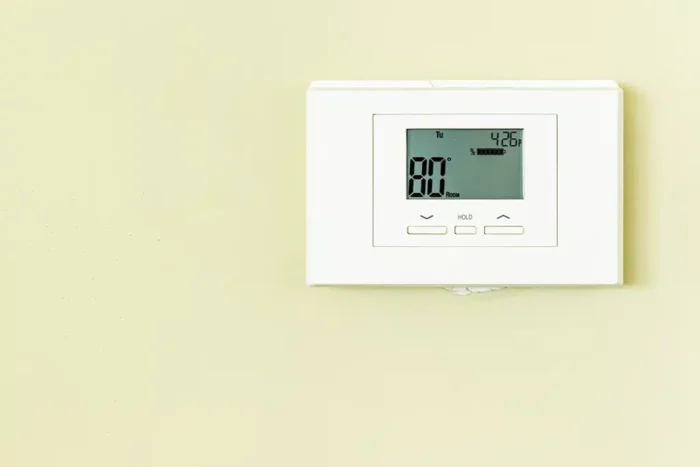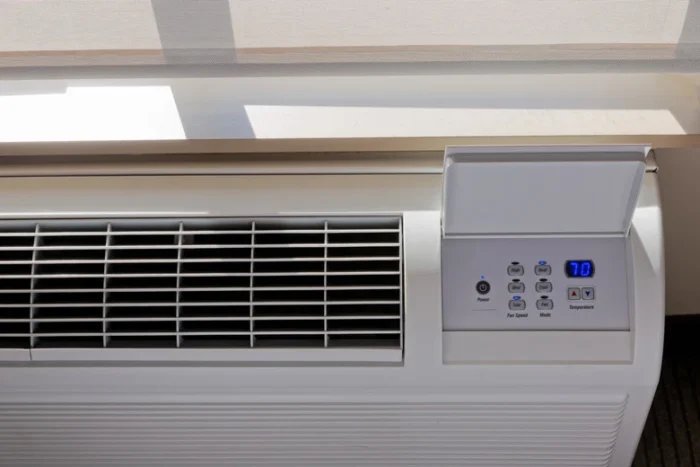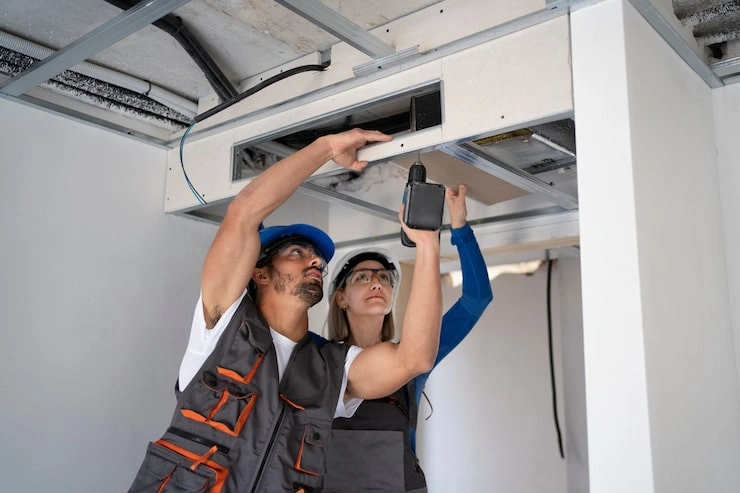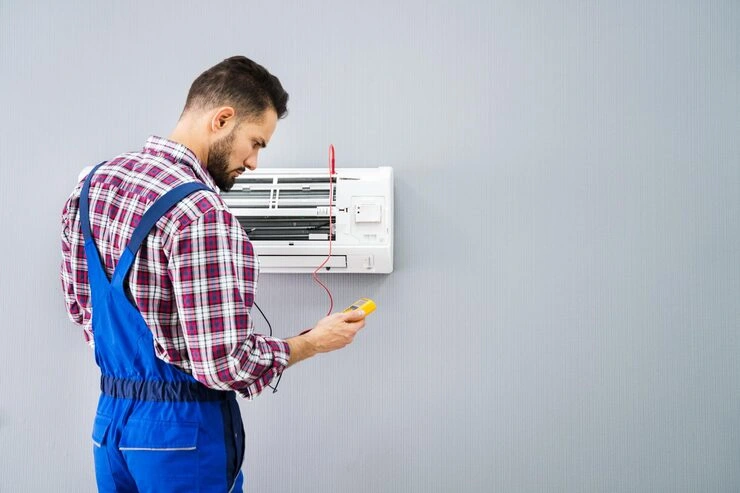How to install a window AC unit is a useful skill that can help you beat the summer heat efficiently and affordably. A window AC provides immediate comfort and is often more budget-friendly than central air systems. It can effectively cool a single room or supplement an existing central air system to improve comfort in specific areas of your home.
On the surface, installing a new AC may seem to be a daunting task, but you can certainly do it independently with a little preparation and the right tools. This guide will guide you through the steps of installing your window AC., from unboxing the unit to securely installing it in your window. You will be nice and cool well before you know it.
Understanding the Basics of Window AC Units

Before you get started with the installation, you will want to have an understanding of how your window air conditioning unit works. These are compact cooling units that fit directly into window openings, provide effective climate control, and do not require ductwork or installation by a professional. Because they work this way, they are simply an efficient and cheap way to cool your area.
Key Components of Your Window AC
Every window air conditioner contains several critical elements that work in harmony:
Air Filter: collects airborne particles and dust to maintain cleaner circulation in the living space.
Thermostat: Automatically maintains the cooling cycle for the desired temperature in the space.
Evaporator Coil: Removes heat from the air inside a space, cooling the airflow temperature.
Compressor: Circulates the refrigerant throughout the system for cooling.
Fan: Distributes the cooled air to the room for continued comfort.
Gaining insight into how these components interact simplifies the installation procedure and equips you to troubleshoot common problems down the line.
Tools and Materials Required for Installation
Before starting, ensure you have all the necessary tools and materials. These will include:
-
Window AC unit
-
Measuring tape
-
Level
-
Screwdriver (typically a flathead or Phillips)
-
Mounting brackets (usually included with the AC unit)
-
Foam or weather stripping for sealing
-
Window locking device or safety brackets (if not included with the AC unit)
-
Drill (if mounting holes are needed)
-
Support bracket (for heavier units)
Having these items on hand will make the installation process smoother and more efficient.
Step by Step Guide to Installing a Window AC Unit

Putting in a window AC is straightforward, especially when it comes to installing it. Window ACs can be a more economical and efficient way of cooling your space and you can install it yourself with some guidance. Follow this complete guide to safely install an air conditioner in window correctly.
Step 1: Choose the Right Window for Installation
The first step in installing a window AC unit is selecting the best window for the installation. Here is what to consider:
Window Size: Check the window opening to see if it can support the size and weight of your air conditioner. Most air conditioners are built for standard double-hung windows.
Window Type: Air conditioners in windows work best in double-hung or sliding types. Casement windows require a different installation.
Location Matters: Choose a window that has some shade and not in the sun. You also want to make sure that airflow is not blocked by furniture, drapes or the outside of the house.
Deal Maker: You want the window to be near a power source and a good support sill and not too high off the floor.
Step 2: Unbox and Inspect Your AC Unit
Before you begin putting in a window AC, take a few minutes to unbox and check all the components:
- Examine the power cord for any potential damage.
- Make sure the air filter has been installed correctly.
- Find the mounting hardware, bracket and user manual.
- Look for weather sealing material, such as insulating strips and foam. They are important in helping to reduce energy loss.
Step 3: Clean and Prep the Window Area
To ensure a secure and efficient installation:
- Wipe down the window sill and frame with a damp cloth.
- Remove any obstructions such as curtains, blinds, or window screens.
- Verify that the window opens and closes easily, and that the sill is solid enough to hold the unit.
Step 4: Install the Mounting Brackets
Secure brackets are essential when you mount air conditioner in window. Follow your AC’s manual to attach the mounting hardware:
- Affix the brackets to the unit as suggested.
- Then, slide the unit partially into the window opening and align the brackets to the sill.
- Use a level to assure that your AC is level slight tilt outward is fine to allow the unit to drain water.
- If needed, drill pilot holes into the window frame and tightly screw the brackets in place.
Safety Tip: For heavier models, use additional support brackets or a mounting kit to prevent window damage or tipping.
Step 5: Carefully Position the AC in the Window
This step often requires two people for safety, especially when putting in a window AC that’s large or heavy:
- Lift the unit and rest the bottom on the window sill.
- Slide it backward until the top edge fits snugly against the lower window sash.
- Center the unit so it’s balanced on both sides.
- Slowly lower the upper sash until it sits firmly behind the AC’s top flange.
Pro Tip: If your window is lower to the ground, use a support bracket underneath for better stability.
Step 6: Secure the AC Unit in Place
Once positioned:
- Use the screws or hardware provided to secure the unit into the window frame.
- Tighten all attached hardware to make sure the unit does not shift or wobble.
- Lock the window sash (or use the window lock or safety bar) to prevent accidental opening.
Stage 7: Block Any Openings and Seams
To ensure energy efficiency is maintained and to prevent outside air:
- Use the side panels supplied in the box and extend fully on either side of the unit to fill the seams.
- Use foam weather stripping or insulation tape around the perimeter.
- Make sure to focus on the top and the sides as that is where leakage can most commonly occur.
Properly sealing your unit allows it to work more efficiently and also helps reduce energy bills.
Stage 8: Test the AC Unit
Now that your unit is mounted, its time to connect it:
- Plug into a dedicated outlet.
- Set the thermostat to a low temperature.
- Check for strong blowing/cold airflow.
- Listen carefully for any unusual noises.
- Look around to check for any water leakage issues or for any vibrations indicating the unit may not be level.
Step 9: Final Checks and Adjustments
Prior to wrapping things up, perform a quick verification of your unit’s safety and energy efficiency:
- Experiment with the fan speeds and cooling settings until you find what works best for you.
- Double-check the unit is attached and sturdy and that there are no screws or fittings loose or dangling.
- If small children or animals will be in the vicinity, use the window locks or safety bar.
- Confirm again that the water drainage path is not blocked, especially if your unit collects condensation or mist.
Common Mistakes to Avoid When Installing a Window AC Unit
Installing a window AC generally falls into the “fairly easy DIY job” category, however there are common pitfalls that will affect performance, safety and energy efficiency. Awareness of these errors right now will help you get your air conditioner in window the right way to begin with.
- Incorrect Positioning: If the unit isn’t level (especially if it is angled inward) this can cause water to collect internally and/or create a mold problem. For any window AC it is advisable for the back to face slightly into the window space even if it is just a few degrees.
- Poorly Sealing: If you do not get the gaps sealed all around your unit you will let the hot air in, and the cold air out, unnecessarily making the ac work harder, and raising your energy use and utility bill. Always use weather stripping or foam insulation, or both at the same time, to seal any holes or gaps.
- Lack of Support: A common mistake when mounting air conditioner in window is not providing enough structural support, particularly for larger or heavier units. Without secure mounting brackets or support arms, you risk damaging the window frame or worse, the unit falling out.
Safety Tips and Precautions
-
Weight Distribution: Be cautious when lifting the AC unit, as these units can be heavy. Consider asking for help when positioning the unit.
-
Electrical Connections: Ensure the electrical connections are secure and that the power cord is not damaged.
-
Secure the Window: Always lock the window after installation to prevent accidental opening.
Conclusion
Installing a window AC unit is an excellent way to bring relief during the summer heat without breaking the bank. With the right tools, preparation, and attention to detail, you can install your AC unit securely and efficiently. Remember to follow the manufacturer’s instructions and ensure your window is well supported and sealed to maximize the unit’s efficiency.
Need help installing your window AC unit?
Hutchinson Heating and Air offers reliable, fast AC installation in Murrieta, Temecula and nearby areas.
FAQs about how to install a window AC unit
Can I install a window AC unit by myself?
Yes, it is possible to install a window AC unit by yourself, especially if the unit is smaller. However, larger units may require assistance due to their weight.
How do I know if my window is suitable for a window AC unit?
Ensure that your window is wide enough to accommodate the AC unit and that it can support its weight. Sliding or double-hung windows are typically ideal.
How can I reduce the noise from my window AC?
To reduce noise, ensure the unit is installed properly and tightly. Sealing any gaps can also help minimize vibrations and noise.
Should I leave my window AC unit running all the time?
It’s best to run the AC unit only when needed. Leaving it on continuously can waste energy and lead to higher utility bills.
How can I improve the efficiency of my window AC unit?
Ensure that the unit is well-sealed, clean, and regularly maintained. You can also use fans to help circulate cool air more efficiently.
What should I do if my window AC unit is leaking water?
Check that the unit is level, as improper installation can cause water leakage. You may also need to check the drainage holes to ensure they are clear of debris.

